How to prune blackberries in spring: schemes and rules for beginners
Blackberries require regular pruning along with other berry bushes (and generally cultivated plants). If this is not done, then the bush will overgrow and turn into wild and impassable thickets. And if it is also not a thornless variety, then it will be very difficult to harvest from such a thorny plant, moreover, the berries themselves will be small and few in number.
So, it is obvious that you still decided to prune the blackberries, choosing spring. Well, better late than never. Let's figure out how to properly prune blackberries in the spring.
Advice! In fact, pruning blackberries is completely identical to pruning raspberries, in other words, even a beginner should not have any difficulties.
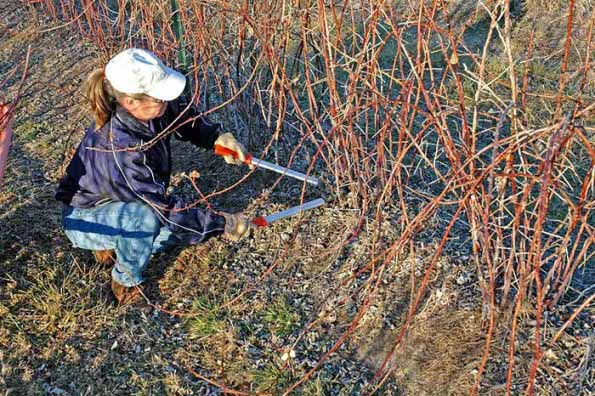
Content
Why prune blackberries in spring: when is it necessary
The fact is that it is generally accepted to carry out the main pruning blackberries after harvest... In the spring, as a rule, they only correct the result and perform sanitary pruning (the shoots that have frozen over the winter are completely removed or pruned to healthy wood).
Another thing is, if for some reason you could not or forgot to cut the blackberries last year, then, of course, this should be done in the spring.
But still cut the blackberries correctly precisely after fruiting and harvesting (in autumn).
The fact is that, firstly, it will be inconvenient for you to cover young shoots for the winter (most likely, you will have to cover unnecessary old, fertile shoots), and secondly, in this way you will create a real breeding ground for diseases and pests.
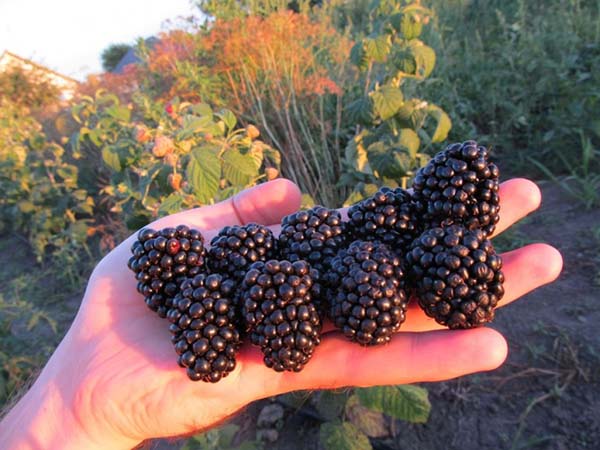
In general, the tasks of pruning blackberries (like any shrub) are:
- cutting out unripe, frozen, broken, dry and damaged shoots (sanitary pruning);
- removal of old, fruiting shoots (so that they do not interfere with the growth and development of new - young ones);
- thinning bushes and getting rid of unnecessary (thickening) shoots, so that the plants are better ventilated and get more sunlight (= better fruit and not get sick);
- pinching the tops of the shoots for their better branching;
- giving the bushes an easy-care shape.
Thus, pruning is one of the main (if not the most important) agrotechnical operations that affect the yield and plant health.
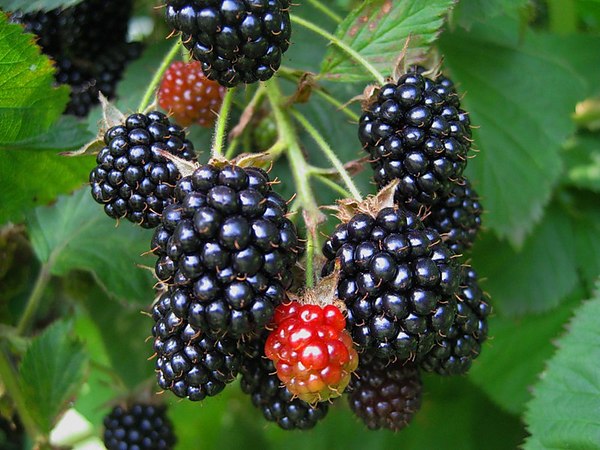
When to prune blackberries in spring, in what month: optimal timing
As a rule, spring pruning of blackberries begins almost immediately after the snow melts, when the minimum positive temperature (+5 degrees) is established during the day and the plant begins to wake up slowly.
By the way! It is believed that pruning is much more convenient to carry out after the buds open and small leaves appear, because you can immediately understand which shoots are frozen and should be subjected to sanitary pruning, and which ones should not be touched.
Now for the approximate timing of when you can start pruning blackberries in the spring in the regions:
- In the South, this is March-early April.
- In the Middle zone (Moscow region) - the second half of April - early May.
- In the Urals and Siberia - from early to mid-May. Around the same time, blackberries are cut in the North-West (in the Leningrad region).
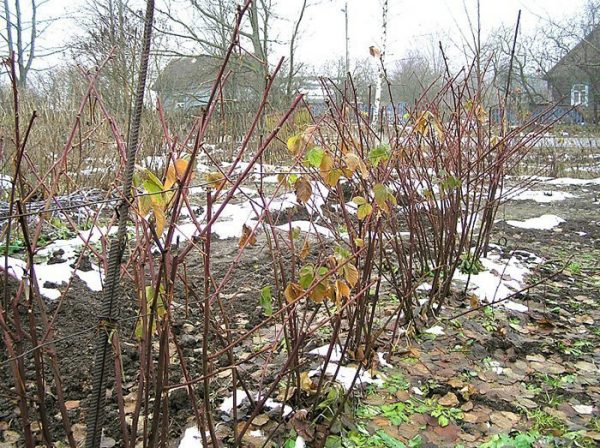
How to prune blackberries correctly in spring
Before you start pruning blackberries (and any plant), you should figure out on which shoots it bears fruit and what kind of life cycle it has.
Blackberry - shrub with a two-year development cycle, which bears fruit on last year's shoots, i.e. on those that grew last year. Accordingly, the fruit bearing shoots are subject to regular removal. At the same time, it is important to leave young shoots (formed last year), they are also called replacement shoots, since they will give a new crop this year.
Thus, pruning is carried out strictly according to the replacement scheme for two-year-old shoots that have previously yielded a crop with young shoots.
Advice! If you live in the South or your climate is mild, then in the spring you may find that the blackberry bushes will stand with leaves, unless the lower ones dry out. In this case, it is better to cut off all the old leaves yourself so that they do not interfere with the growth of the young.
Next, consider 2 cases:
- How to do spring pruning if you haven't pruned your blackberries earlier (last year or at all).
- What to prune in the spring if you did autumn pruning.
How to prune in the spring if you didn't prune in the past year (post-harvest or fall)
- First, you need to completely root out (= at ground level) all dry (old) sprouted shoots.
- And here young escapesthat formed last year (over the summer) - you need leave, on them you and get your new harvest.
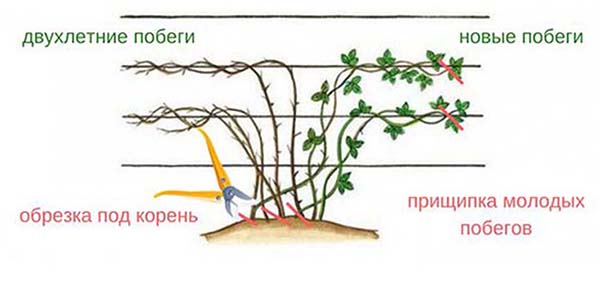
It is necessary to conduct shortening, namely, pinching the tops of these annual shoots, so thatstimulate their better branching (= more abundant fruiting). Usually, enough shoot length of 1.8-2 meters, while the branches of the second order (branches from the main trunk) should be about 40-60 cm. Otherwise, the bush will waste energy in vain, trying to provide food for long shoots.
Shoots need to be shortened by the length of the trellisso that it is convenient to tie them up (in any case, they shouldn't marry her). Wherein it is important to consider the way of garter.
Note! Too long shoots (for example, 3-meter ones) are not profitable to leave in the climate of the Middle Lane: they do not have time to ripen, and all the same, their frozen tops will have to be cut.
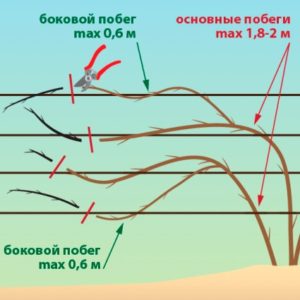
- Also follows normalize the number of young shootsthat will bear fruit this year, because strong thickening of the bushes should not be allowed. In other words, thinning them out, including completely removing (at the root) all weak (thin), diseased shoots so that the shrub does not waste energy on them, trying to maintain.
It is believed that the root system of one healthy medium-sized shrub may well contain 4-6 productive (fruiting) shoots (maximum up to 7-8).
However, as a rule, this is exactly how many of them are formed, in other words, you will not have to normalize anything. On the contrary, quite often many are faced with the problem of the lack of replacement shoots, which is often caused by the abandonment of an excessive number of fruiting shoots (more than 7-8).
How to distinguish young from old shoots
Many aspiring gardeners are afraid to confuse and accidentally remove new shoots (which will yield the harvest) instead of old (fertile).
In fact distinguishing old from new is easy enoughon the contrary, it is very difficult to confuse:
- So old shoots that have fruited last year havemany side ramificationswhile they dry and brittle (they break with a crunch, because there are no living tissues in them), and they often hang on dried remains of stalks and flowers (berries).
- New shoots that will only bear fruit this year, on the contrary,have no lateral ramifications.Moreover, theirbranches are alive and resilient, on them many green buds... When you trim off their frozen tops, you will immediately notice a healthy green tint on the cuts.
Advice! In order not to guess in the spring which shoot is old and fertile, and which new one will bear fruit this year, pruning must be done on time - after harvest (in the fall).
Vide: how to prune a blackberry bush in spring
Spring sanitary pruning
If you have already done a full pruning last year (after harvest or in the fall), then in this case you only need to carry out sanitary pruning, namely:
- Carefully examine the shoots and assess their condition after wintering. If the buds did not swell or open on the tops of the shoots (leaves did not appear), then this may mean the following: the shoots did not initially ripen or froze during the harsh winter.
- And cut off the frozen tops of the shoots to live swollen or already green (opened) buds.
- Also included in sanitary pruning removal of dry, damaged, diseased and weak (thin) shoots.
Remember! If you want blackberries to bear fruit abundantly, they need good lighting and ventilation inside the bushes, which means that they should not be allowed to thicken.
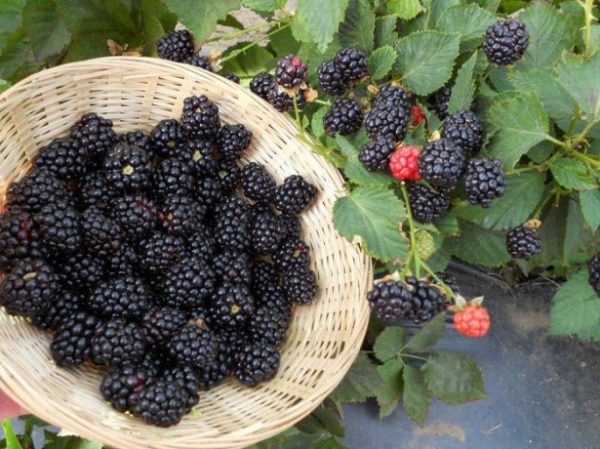
Thus, a correctly performed spring pruning of blackberries will certainly have a beneficial effect on the general condition of the shrub and its future fruiting in the direction of increasing yields.
Video: pruning blackberries in spring


Thanks for the detailed information!
And the question may not be on the topic: how to bring bird droppings to the beds in the spring, is it worth doing it with stale droppings and how?
Hello!
Naturally, ideally, you should only use rotted chicken manure (like manure). And it will be quite enough six-month exposure (very well mixed with sawdust). As for the application rate, it can be applied in a continuous way, i.e. 4-8 kg (depending on the degree of soil fertility) per 1 sq. M. beds for digging, or focal - 2-3 handfuls per hole when planting seedlings, while on top you also need to pour ordinary garden soil (so to speak, make a pillow).
From fresh manure, you can prepare an infusion (in a ratio of 1 to 20 with water) and pour it under the root.